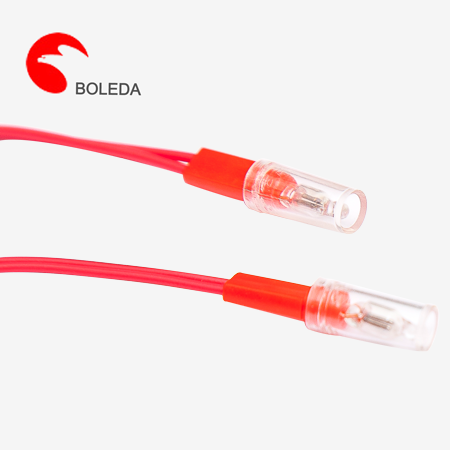Decoding the Indicator Lamp: Common Signals and What They Indicate
Indicator lamps, also known as warning lights or dashboard lights, are an essential part of every vehicle's instrument cluster. They serve as a means of communication between the vehicle and its driver, conveying important information about the vehicle's status and any potential issues that may require attention.
Understanding the various indicator lamp signals and what they indicate can help drivers take appropriate actions to ensure their safety and prevent potential breakdowns. In this article, we will discuss some common indicator lamp signals and their meanings.
1. Check Engine Light: One of the most notorious indicator lamps, the check engine light is often a cause for concern among drivers. It typically illuminates when a fault is detected in the vehicle's engine or emission control system. While the issue may range from a loose gas cap to a major engine malfunction, it is advisable to have the vehicle inspected by a professional as soon as possible to diagnose and fix the problem.

2. Battery/Charging System Light: This indicator lamp, typically shaped like a battery, illuminates when the vehicle's charging system is malfunctioning. It may indicate a faulty alternator, a loose or broken belt, or a failing battery. If this light comes on while driving, it is important to address the issue promptly to avoid a complete loss of electrical power, which could lead to a breakdown.
3. Oil Pressure Light: The oil pressure light indicates a drop in oil pressure within the engine. It may illuminate due to low oil level, a faulty oil pump, or an oil leak. Insufficient lubrication due to low oil pressure can result in engine damage, so it is crucial to stop the vehicle and check the oil level immediately. If the oil level is sufficient, it is recommended to have the vehicle inspected by a professional to determine the underlying cause.
4. Tire Pressure Monitoring System (TPMS) Light: This indicator lamp, shaped like a tire with an exclamation point, illuminates when one or more tires have low air pressure. Underinflated tires can compromise vehicle handling, fuel efficiency, and tire lifespan. If this light comes on, it is advisable to check the tire pressures and adjust them to the recommended levels.
5. ABS (Anti-lock Braking System) Light: The ABS light indicates a malfunction in the vehicle's anti-lock braking system. While the conventional braking system should still function, the ABS may not operate as intended in emergency situations. It is important to have the ABS system examined and repaired by a professional to ensure optimal braking performance.
6. SRS (Supplemental Restraint System) Light: This indicator lamp, usually depicting a person seated with a deployed airbag, illuminates when there is a fault in the vehicle's airbag system. It is important to note that if the SRS light is on, the airbags may not deploy correctly in the event of an accident. Prompt attention from a professional technician is essential to diagnose and rectify the issue.
7. Coolant Temperature Light: The coolant temperature light indicates that the engine is running at an excessively high temperature, which may lead to engine damage or overheating. It is vital to pull over safely and allow the engine to cool down. Checking the coolant level and inspecting for any leaks or other cooling system issues is recommended before continuing the journey.
8. Fuel Level Indicator: This indicator lamp, resembling a fuel pump, illuminates when the fuel level in the vehicle's tank drops to a low level. It serves as a reminder to refuel promptly to avoid running out of fuel, which can lead to a breakdown.
These are just a few examples of the many indicator lamps found in most vehicles today. It is crucial for drivers to familiarize themselves with their vehicle's specific indicator lamps and their meanings. Regularly checking the instrument cluster for any warning lights and taking appropriate action can help ensure the vehicle's safety, reliability, and longevity. When in doubt, consulting the vehicle's owner's manual or seeking professional advice is always recommended.

 NE-2 orange color
NE-2 orange color 410 613 Neon lamp with resistor, cable and sleeve, resistor neon tubes
410 613 Neon lamp with resistor, cable and sleeve, resistor neon tubes 513 616 Neon lamp with resistor and cable and sleeve and ring terminal L terminal
513 616 Neon lamp with resistor and cable and sleeve and ring terminal L terminal E10BA9S Plastic Shell Tin soldering, butt welded, crimped Neon Glow Lamps
E10BA9S Plastic Shell Tin soldering, butt welded, crimped Neon Glow Lamps Fuse type Neon Lamp Tin soldering, butt welded, crimped with resistor for test pen
Fuse type Neon Lamp Tin soldering, butt welded, crimped with resistor for test pen 6 mm Neon indicator lamps, indicating lamps with resistor and PVC cableSilicone cable
6 mm Neon indicator lamps, indicating lamps with resistor and PVC cableSilicone cable 10 mm Neon indicator lamps, signal lights with PVC cable
10 mm Neon indicator lamps, signal lights with PVC cable 12 mm Neon indicator lamps red color with Crimped resistor PVC cable
12 mm Neon indicator lamps red color with Crimped resistor PVC cable 3mm5mm Led light, LED lamp with resistor and diode
3mm5mm Led light, LED lamp with resistor and diode 3 mm leds roundStrawflat shape, water cleardifussed
3 mm leds roundStrawflat shape, water cleardifussed 5 mm leds roundStraflat shape, water cleardifussed
5 mm leds roundStraflat shape, water cleardifussed































Comment
(0)